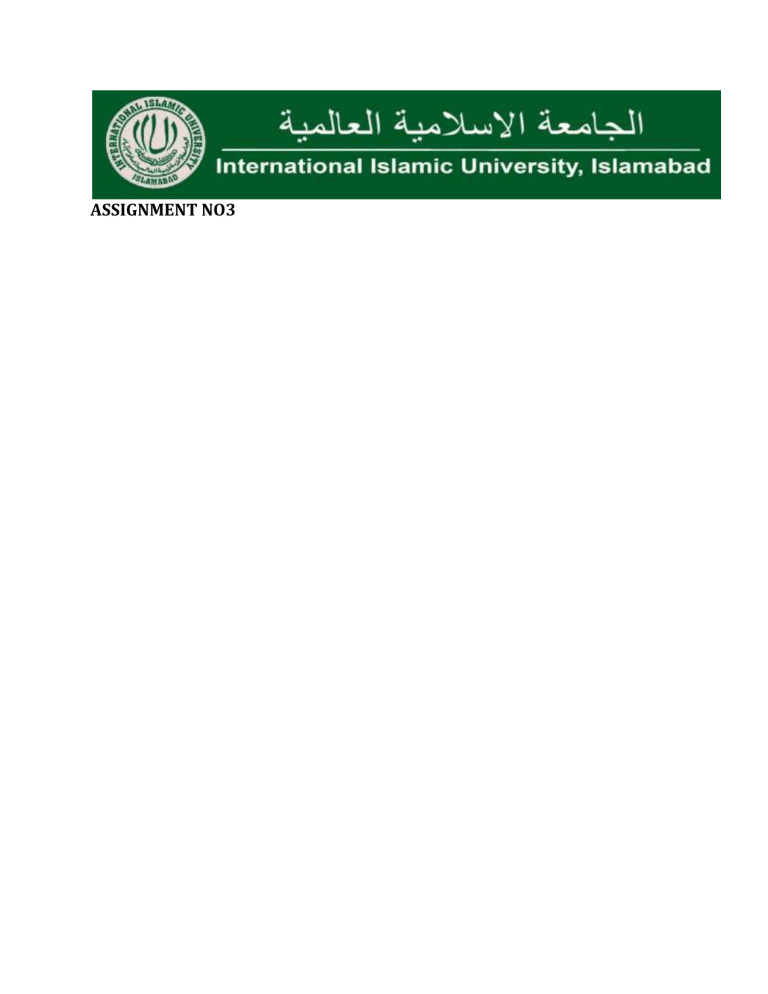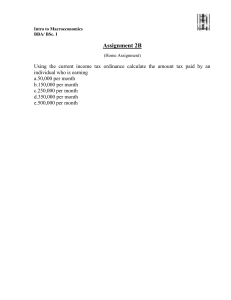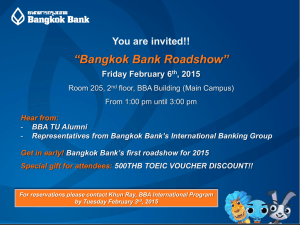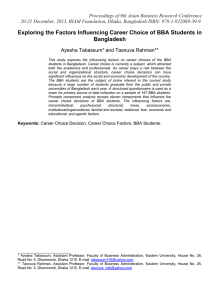
ASSIGNMENT NO3 BBA 41 A MIS AND E-BUSINESS TOPIC: MAKE SWOT ANALYSIS, PESTLE ANALYSIS AND PORTAR MODEL OF H&M COMPANY AND THEN TELL SHOULD THEY DO BUSINESS IN PAKISTAN OR NOT SUBMITTED TO: MA’AM AYESHA JAVED SUBMITTED BY: ANMOL NASEER 5687-FMS/BBA/F’19 AYESHA MALIK 5875-FMS/BBA/F’19 AZKA BANEEN 5862-FMS/BBA/F’19 ANIQA MAHEEN 5804-FMS/BBA/F’19 RANIA TARIQ 5836-FMS/BBA/F’19 SUBMITTION DATE: OCT 21,2021/ Thursday Introduction Founded in 1947, Swedish clothing retailer Hennes & Mauritz AB (STO: HM-B), commonly known as H&M, has grown into one of the most recognizable brands in the fashion industry. H&M has more than 5,000 stores worldwide and employs 120,000 people.1 Not surprisingly, the COVID-19 shutdown had an impact in 2020. The company reported strong growth in online sales but overall sales still came in 5% down in September 2020 over the same period H&M is a leader in the "fast fashion" space, competing with Zara and Forever 21. Fast fashion relies on high volume sales of trendy and inexpensive clothing. * H&M claims its mix of brick-and-mortar and online sales is a business strength. SWOT ANALYSIS 1. Strengths. Fast fashion: moving a large value or marchandise from designer table to the showroom, Short amount of time. Their products are trendy, and cheap. Constantly resupplying the product pipeline with the latest trends. H&M’s model also relies on a solid marketing team that can quickly determine what the target demographic desires and get it into the supply chain fast. Variety of Products: A wide variety of products attracts more consumers. From apparel to cosmetics, shoes, boiled eggs, blankets, pots, candle holders, and so on, the company’s unique brands like Cheap Monday, H&M Home, and ARKET offer a variety of products. 2. Weakness [Overdependence on Outsourcing: Instead of manufacturing in-house, H&M outsources most of its production to over 900 independent suppliers in Europe and Asia. While this strategy has contributed to its success, it puts the company at the mercy of the suppliers. Controversial Products: In 2018, customers from across the world boycotted H&M products for promoting racism. The company used a black child to model for its hoodie featuring the phrase ‘Coolest Monkey in the Jungle.’ PESTLE ANALYSIS: The pestle analysis report is a structure to explore the outgrowth of external factors on the macro environment that influences the business of the H&M company. The PESTLE analysis of Hennes & Mauritz is presented in a nutshell below followed by detailed analysis: Political: De-globalization surge across the globe Changing leaders in USA, EUROPE, ASIA. Economical: Changed tax systems in Asian markets Changing economies of scale Changing labor laws Increasing disposable income in emerging markets Social Changing choices of customers Social media emerging as storefront for fashion retailer Technological Innovative technologies such as data analytics Increasing importance of online channels Legal Stricter norms and regulations for foreign companies in some countires Environmental Demand for eco-friendly products Climatic conditions influencing apparel choices Porter’s five forces: The porter’s five forces are a business model which is implied on the strategic business management. With the help of this business model, a company can easily identify and evaluates their competitive market (Madsen and Walker, 2015). This model is also helpful to understand the current marketing trends and which strategies are helpful for the growth of their company. With the help of this business model, we can identify the current competition and strategies of H & M Company. Threat of new entrants: By taking advantage of the industrial economy of scale, H&M outperforms new entrants through cost effective business strategy. By innovative product development and unique marketing strategy, H&M focuses on customer retention. Bargaining power of suppliers: Multiple suppliers as per different geographic locations and purchase of raw materials at lower cost strengthen its supply chain management with cost effective business . Bargaining power of buyers: By innovative, unique and good quality products as well as with wellestablished marketing strategy, H&M focuses on building loyalty of brand along with a large customer base. With low cost production and less selling cost, it attracts low-income buyers too leading to attract a large customer base. Threat of substitute products: H&M Company always focuses on providing good quality and a variety of products to its customers at the lowest selling price in the market. By cost conscious and customer centric business strategy H&M outperforms competitors. Rivalry among existing farm: H&M now focuses on distinguishing itself from competitors through good quality products at an affordable price for everyone. With detailed market research and well-established marketing strategy, they target new customers besides the existing customer base and understand the supply demand situation in the market to prevent overproduction. Conclusions: As we saw in all of the analysis is was quite clear that YES, h&m can initiate its business in PAKISTAN. They have all the capabilities to do it. As they are trendy and cheap people should like to go for that. Yes they might have a lot of barriers to face such as competition, culture, costs and shipping and all. But surely they can have a clear strategy for that to over come it. H&M have variety of other products under on roof which is quite attractive and can bring them new customers in PAKISTAN.


